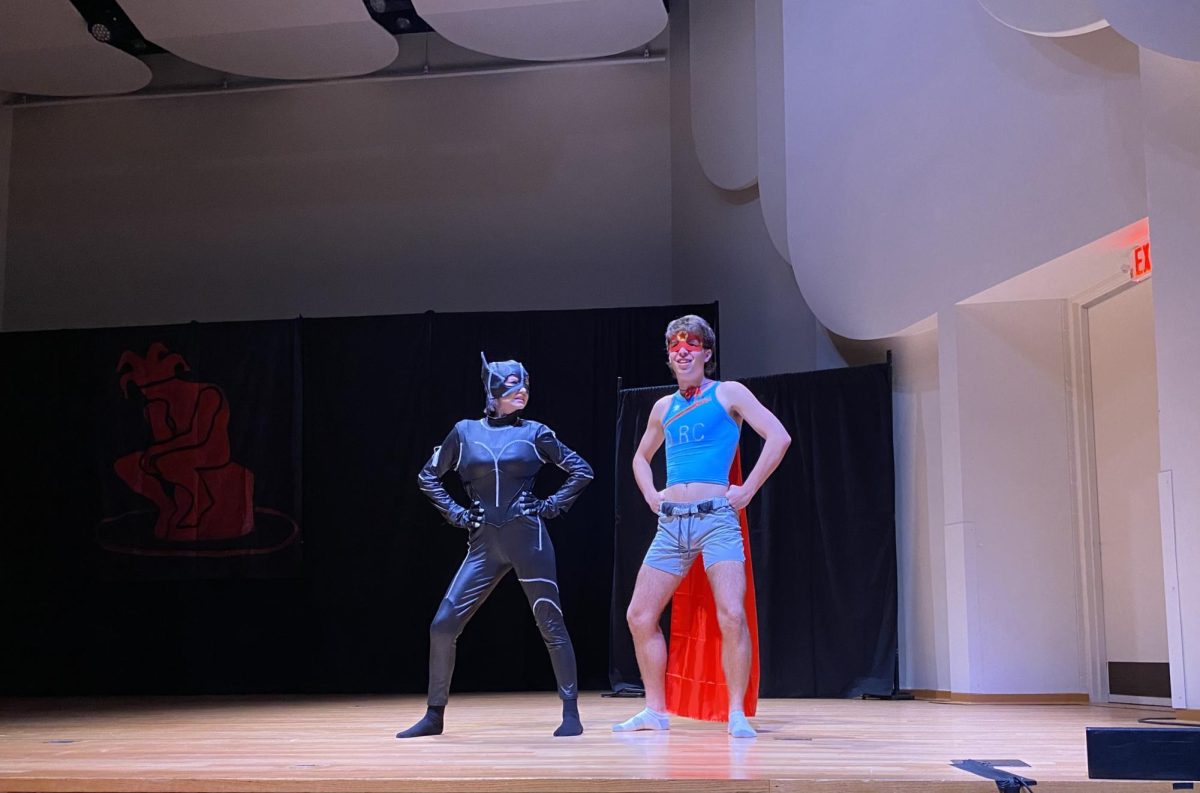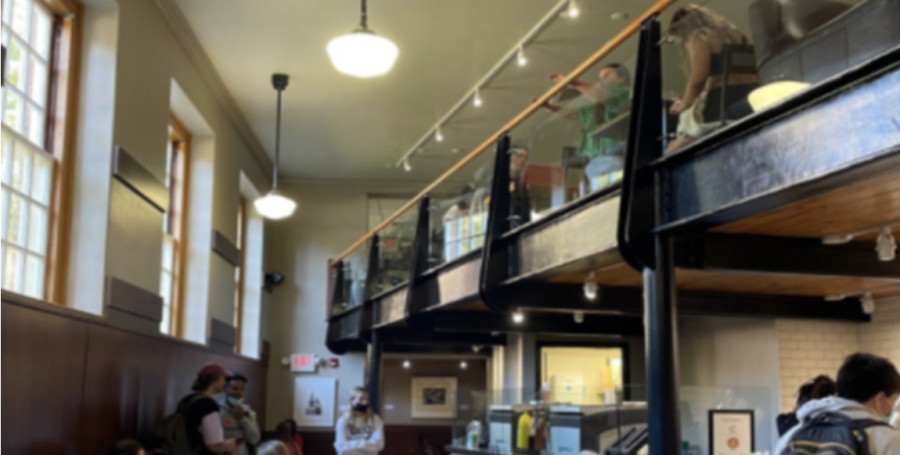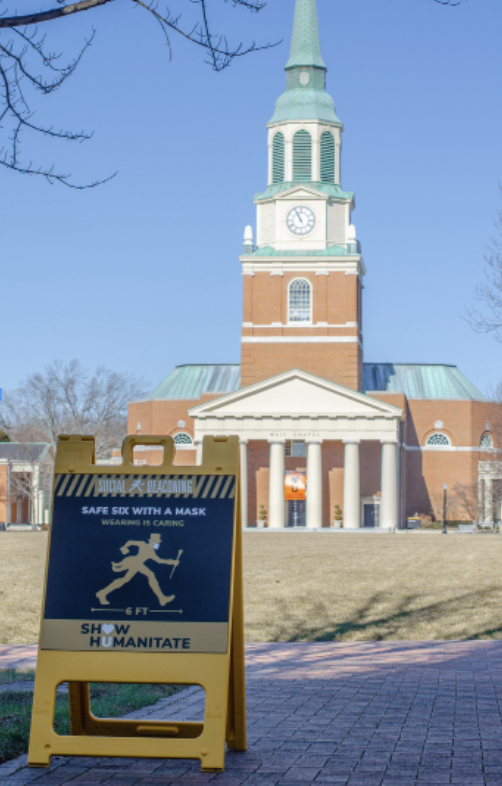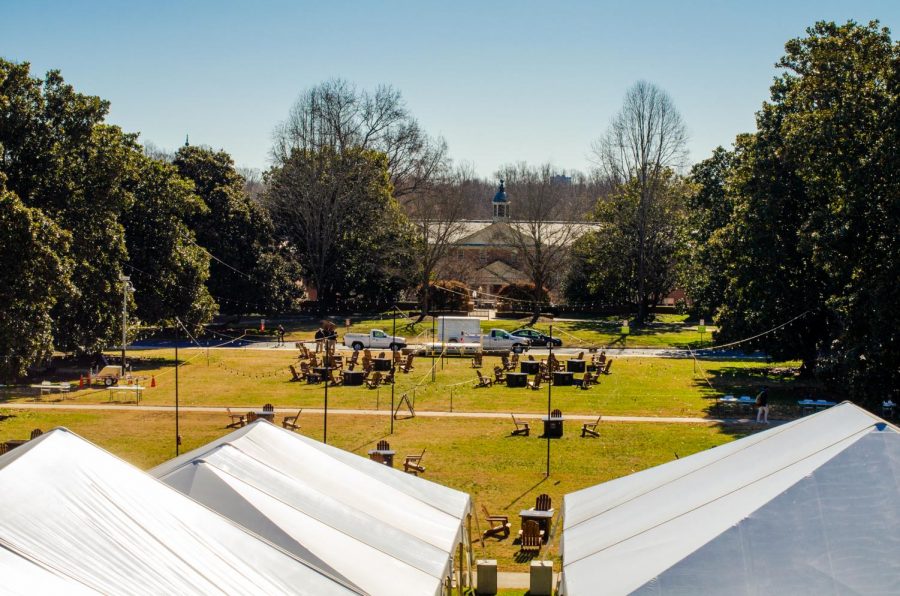On June 30, Wake Forest announced their “Our Way Forward” plan, which includes preliminary details for how campus is going to open back up in the Fall. The plan, as it stands until July 15 when we receive more details, includes a complete restructuring of campus life in order to lower the threat of students contracting COVID-19.
First, and perhaps most notably, the university is reducing its number of shared rooms, having 65% of on-campus housing serving as single rooms. Second classes have been adapted to accommodate both in-person and online students, with many professors opting to teach online or in a blended capacity. Appointments must be made to study in ZSR and work out at Reynolds Gym. Dining services are being streamlined so that buffet style dining is no longer available and there is a lower chance of spreading COVID-19 through communal dining. The list goes on, and as more details unfold, we can see the bigger picture of campus life in the coronavirus era.
The university is, of course, not the only higher education institution across the country struggling to design a learning environment that is desirable for students, but also safe from the predicted “second wave.” In comparison, some universities have presented even stricter guidelines, or have shut down completely for the fall semester.
The California State University System announced as early as May that they would not be holding in-person classes across their 23 campuses this fall. They are on the more drastic side of a university COVID-19 response, but they are not alone: Harvard University has also issued a decision that they would not be holding in-person classes for the entire 2020-2021 school year.
However, when focusing on smaller schools in our geographical region, the plans are much more similar to Wake Forest’s:
In an email addressed to students and faculty, Duke University President Vincent Price announced on June 30 that Duke would welcome students back to campus in a new format. Much like Wake Forest, the semester will be shortened to finish by Thanksgiving, and classes will be a mixture of both in-person and online instruction. They are also issuing a signed agreement for all students called the Duke Compact, where all signees agree to “community health and behavioral standards.” Wake Forest is set to announce their own student compact, as well.
Richmond University in Virginia has a four-pronged approach to their COVID-19 response. There are four stages: Red, Orange, Yellow and Green. Each stage is specifically designed for a different environment. For example, the Red Stage is the most conservative and puts the most limitations on student life, and in contrast, the Green Stage is what RU predicts the new, post-COVID-19 normal will look like for students.
For UNC Chapel Hill, their response plan looks very similar to Wake Forest’s. They, too, are returning early (August 10) and finishing by Thanksgiving in order to avoid shutting down due to a second wave. In addition to adjusting campus life to make it safer for students to return, UNC is developing a new program called “Carolina Away” where up to 1,000 new students who cannot come to campus, can participate in “high quality digital sections of key courses.”
Across the board, university COVID-19 responses vary in intensity, but all are underscored by a desire to keep students and faculty as safe as possible. Some are questioning if the motivation for reopening is purely in the interest of students or more about maintaining a steady stream of revenue. Reopening is also entirely situational, numbers across the nation are not going down and yet the country continues to reopen at an alarming rate. Only time will tell if these guidelines are actually effective in preventing COVID-19 breakouts among the student, staff and faculty populations.
















